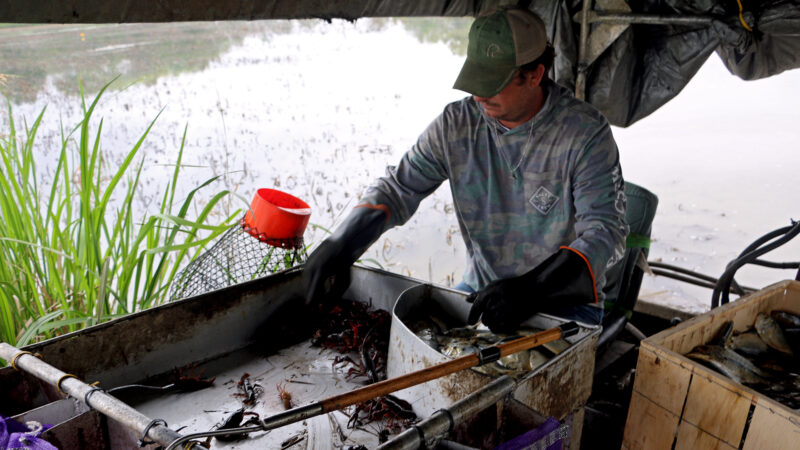What Stands in a Storm
Monday marks the fourth anniversary of a massive tornado outbreak where 62 tornados raked across Alabama in a single day. More than 250 people died from those storms on April 27, 2011. Writer Kim Cross chronicles that time through several personal stories in her book What Stands in a Storm. It grew out of an article she wrote for Southern Living magazine. She spoke with WBHM’s Andrew Yeager.
An extended interview:
Interview Highlights
Developing the book:
I really started by looking at children’s books about meteorology to understand the basics of tornados. And then from there I graduated to textbooks and a lot of interviews with meteorologists. I wanted to wrap my head around the magnitude of the storm…That one day was part of a three day outbreak that affected 21 states from Texas to Canada. It was just massive.
I wanted to understand the event and then I wanted to tell it through the people who lived it. I really wanted it to be literary nonfiction where it reads like a novel but it’s all based on reported fact.
How technology helped her reporting:
The families of several victims friended me from from their victims’ Facebook page and they also shared with me text conversations recovered from their phones. And between these two things I felt like I was able to really get verbatim dialogue that was timestamped and that reflected what they were thinking at a very specific moment in time. So whenever I say that someone is thinking something or express their inner thoughts like a novelist would, that comes from either a social media post or a text or something that they said they were thinking to a primary source that was able to recount it to me.
Reaction from victims’ families:
One of the things that I did to fact check this that I don’t think a lot of journalists do is I sat down with each of the families and had a private reading where I read aloud every chapter in which their loved one appeared…I wanted to make sure the first time they experienced it was with me and not alone in a room and we cried together. We cried the ugly cry. And it was really good for both of us. And it was closure I think in this big long really difficult process.
What’s your favorite thing about Alabama?
That's the question we put to those at our recent News and Brews community pop-ups at Hop City and Saturn in Birmingham.
Q&A: A former New Orleans police chief says it’s time the U.S. changes its marijuana policy
Ronal Serpas is one of 32 law enforcement leaders who signed a letter sent to President Biden in support of moving marijuana to a Schedule III drug.
How food stamps could play a key role in fixing Jackson’s broken water system
JXN Water's affordability plan aims to raise much-needed revenue while offering discounts to customers in need, but it is currently tied up in court.
Alabama mine cited for federal safety violations since home explosion led to grandfather’s death, grandson’s injuries
Following a home explosion that killed one and critically injured another, residents want to know more about the mine under their community. So far, their questions have largely gone unanswered.
Crawfish prices are finally dropping, but farmers and fishers are still struggling
Last year’s devastating drought in Louisiana killed off large crops of crawfish, leading to a tough season for farmers, fishers and seafood lovers.
Lawmakers consider medical cannabis revamp
It’s been three years since Alabama lawmakers passed legislation establishing a system to govern medical cannabis in the state, yet not one prescription for the drug has been filled. The rollout has been delayed by lawsuits and conflict over the licensing process.








